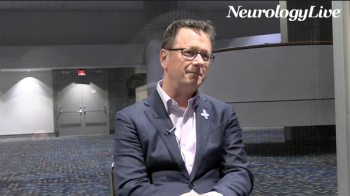
Daniel M. Goldenholz, MD, PhD: Assessing the Risk for SUDEP
The instructor in neurology at Beth Israel Deaconess Medical Center spoke about what clinicians can do right now to mitigate the risk of SUDEP and the myriad of options for them to utilize.
“If you have more than 1 [generalized tonic-clonic seizure] per year, then you were simply a high-risk patient. If you didn’t then you were low-risk. We wondered if that was a static, frozen in time thing, or is that something that changes over time?”
Sudden unexpected death in epilepsy, or SUDEP, is a rare, but incredibly frightening condition that can occur in patients with epilepsy. While not much is known about its cause, a recent guideline suggested that the occurrence of a single generalized tonic-clonic seizure raised the risk of SUDEP occurring.
To determine whether or not this risk can be mitigated or if it changes over time, Daniel M. Goldenholz, an instructor in neurology at Beth Deaconess Medical Center, and colleagues worked with SeizureTracker to see how this risk can change over time. Ultimately, they wished to know if this risk is set once determined, or if it can be lowered over time.
At the American Epilepsy Society’s (AES) annual meeting in New Orleans, Louisiana, Goldenholz sat with NeurologyLive to discuss SUDEP and summarize the work he and his colleagues did.
As well, he spoke about what clinicians can do right now to mitigate the risk of SUDEP and the myriad of options for physicians to utilize to act to adjust the risk, as well as some of the nuances that come along with those actions.
Newsletter
Keep your finger on the pulse of neurology—subscribe to NeurologyLive for expert interviews, new data, and breakthrough treatment updates.


































